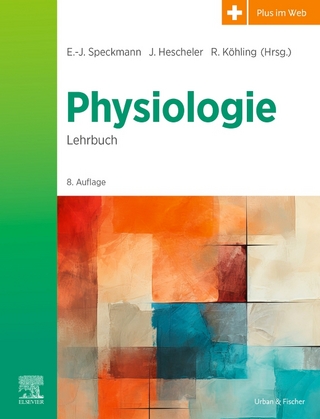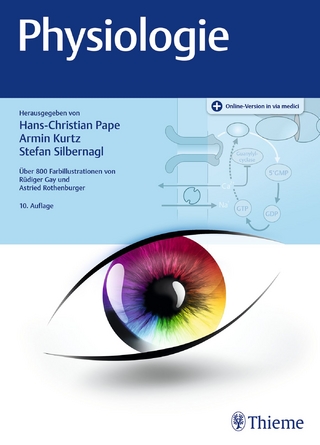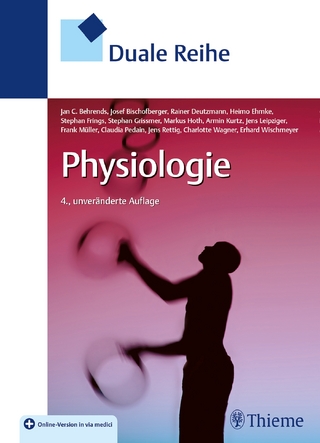
Applied Environmental Metabolomics
Academic Press Inc (Verlag)
978-0-12-816460-0 (ISBN)
Dr David J. Beale is a Senior Research Scientist at the CSIRO, delivering research outcomes and creating impact in the area of environmental metabolomics and analytical chemistry. David couples high-throughput next-generation tools with environmental monitoring techniques for detecting, quantifying and tracking contaminants in the environment and assessing their biological impact using omics-based approaches. David is the current vice president of the Australian and New Zealand Metabolomics Network. Katie is a marine biologist by trade, interested in the application of total systems biology-based approaches to answer ecologically relevant questions (environmental 'omics). Specifically, the development and use of these sensitive tools for assessing complex changes (natural and man-made) in aquatic ecosystems, and ultimately to enhancing system management, function and resilience. Dr Warden leads the CSIRO Metabolomics & Proteomics Team at CSIRO and is based in Canberra, Australia. He obtained his PhD in Chemistry from Monash University, Victoria, Australia in 2005 after which he joined CSIRO (Melbourne) as postdoctoral fellow. He moved to Canberra in 2007 and gained tenure as a research scientist at CSIRO in 2011 after completing a second postdoctoral fellowship. Dr Warden has worked across a very broad range of science areas, including synthetic organic chemistry, X-ray crystallography, novel lipid production in plants, enzyme design and engineering, biofuels and bioenergy, molecular modelling and computational chemistry. His most recent efforts have been in omics since leading the Metabolomics and Proteomics Team into the space over the past few years. He has led the effort to build a world class analytical chemistry facility at CSIRO Black Mountain since 2012 and sits on the Steering Committee for the Joint Mass Spectrometry Facility at the Australian National University (ANU). Dr Warden also leads the Metabolomics arm of the CSIRO/ANU National Agricultural and Environmental Sciences Precinct, which is a $48M endeavour between the two organisations to build a collaborative hub to build a sustainable future for the environment, agriculture and global food supplies. Oliver Jones is a Professor of analytical chemistry at RMIT University in Melbourne, Australia. He obtained his PhD from Imperial College London in 2005, after which he joined the University of Cambridge as a postdoctoral fellow in Biochemistry until 2009. He then worked as a lecturer at the University of Durham before moving to RMIT in 2012. Prof. Jones is currently the Associate Dean for Biosciences and Food Technology at RMIT. He has broad interdisciplinary interests across many areas of chemistry, (analytical, biological, environmental) and chemical/environmental engineering (water technology and hydrology). Prof. Jones is particularly interested in tracking the fate and behaviour of organic micropollutants in the environment and determining their possible effects on biological systems. He previously served two terms as a Director of the International Metabolomics Society and was a past president of the Australian and New Zealand Metabolomics Network, co-president of Proteomics and Metabolomics Victoria, and secretary of the Australian and New Zealand Society for Magnetic Resonance as well as a member the Australian Academy of Science, National Committee for Chemistry. He is a Fellow of the Royal Society of Chemistry and the Royal Australian Chemical Institute, and an Associate Fellow of the Institution for Chemical Engineers.
Introduction to Environmental metabolomicsWhat is environmental metabolomics?Overview of analytical tools and techniques used in environmental metabolomicsStatistical frameworks and tools
Theme 1 - Environmental metabolomics applied to epidemiology (environmental exposure)Key principles and consideration of epidemiology-based environmental metabolomicsState-of-the-art review of epidemiology-based environmental metabolomicsCase study example of environmental contaminant study 1Case study example of environmental contaminant study 2Case study example of environmental contaminant study 3Synthesis and Future considerations of epidemiology-based environmental metabolomics (in the form of standard operating procedures (SOPs))
Theme 2 - Environmental metabolomics applied to model organisms (impacts of environmental contaminants)State-of-the-art review of model organism-based environmental metabolomicsCase study example of environmental contaminant study 1Case study example of environmental contaminant study 2Case study example of environmental contaminant study 3Synthesis and Future considerations of model organism-based environmental metabolomics (in the form of SOPs)
Theme 3 - Environmental metabolomics applied to wild-caught organisms (ecological impacts)Key principles and consideration of field environmental metabolomicsState-of-the-art review of field environmental metabolomicsCase study example of environmental contaminant study 1 (vertebrates)Case study example of environmental contaminant study 2 (vertebrates)Case study example of environmental contaminant study 3 (invertebrates)Case study example of environmental contaminant study 4 (invertebrates)Synthesis and Future considerations of field environmental metabolomics (in the form of SOPs)
Theme 4 - Environmental metabolomics applied to microbial communities (ecosystem health)Key principles and consideration of microbial community-based metabolomicsState-of-the-art review of microbial community-based metabolomicsCase study example of environmental contaminant study 1Case study example of environmental contaminant study 2Case study example of environmental contaminant study 3Synthesis and Future considerations of microbial community-based environmental metabolomics (in the form of SOPs)Outlook and future perspectives for environmental metabolomics research
| Erscheinungsdatum | 24.06.2022 |
|---|---|
| Verlagsort | San Diego |
| Sprache | englisch |
| Maße | 191 x 235 mm |
| Gewicht | 450 g |
| Themenwelt | Studium ► 1. Studienabschnitt (Vorklinik) ► Physiologie |
| Studium ► Querschnittsbereiche ► Prävention / Gesundheitsförderung | |
| Technik ► Umwelttechnik / Biotechnologie | |
| ISBN-10 | 0-12-816460-3 / 0128164603 |
| ISBN-13 | 978-0-12-816460-0 / 9780128164600 |
| Zustand | Neuware |
| Informationen gemäß Produktsicherheitsverordnung (GPSR) | |
| Haben Sie eine Frage zum Produkt? |
aus dem Bereich


